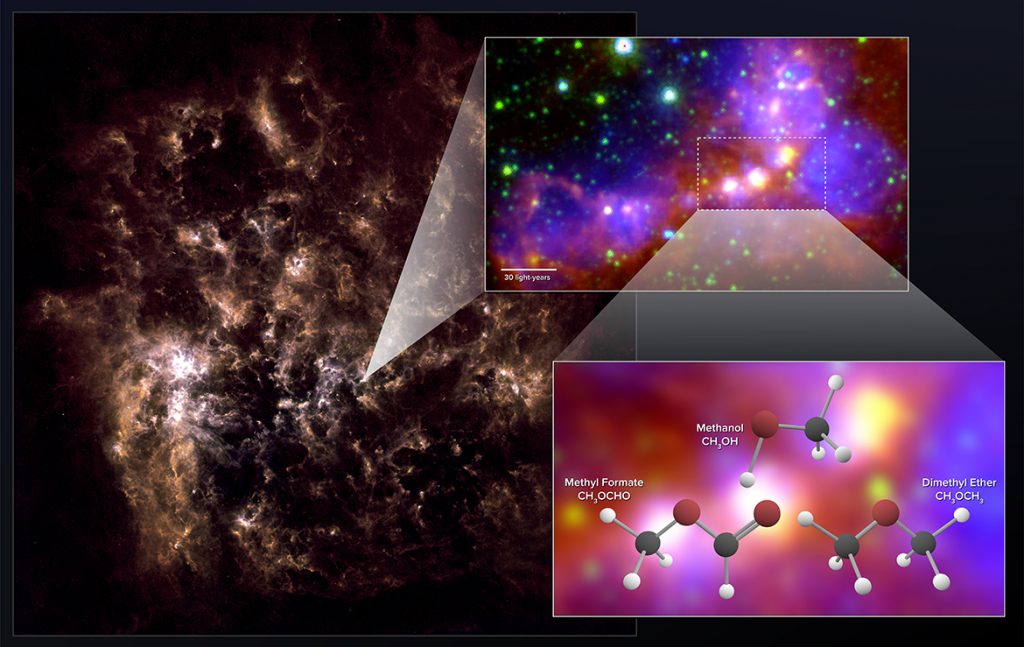Oujééé!! :)
Stellar Embryos in Nearby Dwarf Galaxy Contain Surprisingly Complex Organic Molecules - National Radio Astronomy Observatory
https://public.nrao.edu/news/2018-alma-coms-lmc/
The nearby dwarf galaxy known as the Large Magellanic Cloud (LMC) is a chemically primitive place.
Unlike the Milky Way, this semi-spiral collection of a few tens-of-billions of stars lacks our galaxy’s rich abundance of heavy elements, like carbon, oxygen, and nitrogen. With such a dearth
of heavy elements, astronomers predict that the LMC should contain a comparatively paltry amount of complex carbon-based molecules. Previous observations of the LMC seem to support that view.
New observations with the Atacama Large Millimeter/submillimeter Array (ALMA), however, have uncovered the surprisingly clear chemical “fingerprints” of the complex organic molecules methanol,
dimethyl ether, and methyl formate. Though previous observations found hints of methanol in the LMC, the latter two are unprecedented findings and stand as the most complex molecules ever
conclusively detected outside of our galaxy.
Astronomers discovered the molecules’ faint millimeter-wavelength “glow” emanating from two dense star-forming embryos in the LMC, regions known as “hot cores.” These observations may provide
insights into the formation of similarly complex organic molecules early in the history of the universe.
“Even though the Large Magellanic Cloud is one of our nearest galactic companions, we expect it should share some uncanny chemical similarity with distant, young galaxies from the early universe,”
said Marta Sewiło, an astronomer with NASA’s Goddard Space Flight Center in Greenbelt, Maryland, and lead author on a paper appearing in the Astrophysical Journal Letters.
